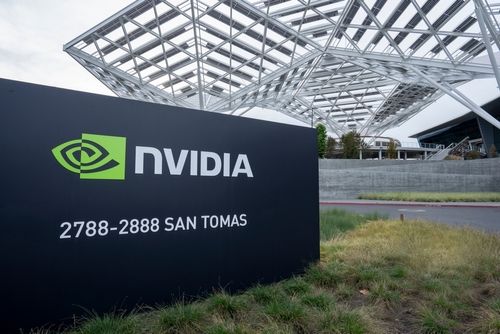
If you held on to Nvidia (NASDAQ: NVDA) stock for the last three years, you are probably laughing all the way to the bank. A $10,000 bet made in early 2022 would be worth almost $55,000 today -- an impressive return of 450%. That said, past performance doesn't guarantee future results. And the dynamics that helped Nvidia achieve such remarkable performance could change significantly.
The new Chinese large language model (LLM) DeepSeek is the elephant in the room. It purportedly demonstrated that advanced AI models can be built without outrageous costs, in stark contrast to the strategies used by its American rivals, such as OpenAI, Alphabet, and Meta Platforms. Let's explore how this story could develop over the next three years and beyond.
This isn't just about DeepSeek
While it's easy to blame DeepSeek for all the AI industry's challenges, that might miss the big picture. The core problem is that training LLMs is too expensive relative to their profit potential. While the emergence of a dramatically cheaper Chinese rival brought this problem into the mainstream, industry observers have been discussing it for months.
In June 2024, Goldman Sachs published a report titled "Gen AI: Too Much Spend, Too Little Benefit." The paper suggested that the $1 trillion in capital expenditures tech giants are expected to pour into generative AI hardware and development is unlikely to pay off because of the technology's inherent limitations. It argued that LLMs might not be ideal at solving complex problems that can justify their development costs.
For Nvidia, this problem is distant because it focuses on the pick-and-shovel side of the opportunity -- making the graphics processing units (GPUs) that cloud computing companies use to build their AI computing power (which is then rented to consumer-facing start-ups). However, as these start-ups continue to fail or burn through money (OpenAI lost $5 billion in 2024), it may be a matter of time before chip demand starts to slow.
DeepSeek makes the problem too obvious to ignore
While AI bulls were content to ignore the warning signs of unsustainable industry spending, DeepSeek made the problem too obvious to ignore. With its launch in January, the company's open-source generative AI chatbot quickly became the most downloaded free app in the U.S. on Apple's App Store -- beating out its American rival ChatGPT.
More importantly, DeepSeek's R1 model has similar performance to ChatGPTs o1 despite being developed for $6 million using less advanced Nvidia H800 chips, according to its developers. OpenAI claims DeepSeek may have used its proprietary models to train R1 in a process called "distillation," and the White House's AI and crypto czar David Sacks believes "it is possible" that IP theft occurred during its development.

Image source: Getty Images.
Over the coming years, it is possible that the U.S. government could intervene on behalf of American AI companies by further restricting chip exports to China (a move that could hurt Nvidia's sales in that country) or try to undermine DeepSeek based on intellectual property enforcement or national security concerns, as was done to TikTok.
But ultimately, it seems like the cat is out of the bag, and even if the U.S. manages to stamp out DeepSeek, other cheaper LLMs could rise to take its place.
The already questionable economics behind big tech's AI chip spending has become even harder to justify.
Where will Nvidia be in the next 3 years?
Over the coming years, investors should expect Nvidia's growth and margins to decline as industry participants realize they don't need its latest (and most expensive) hardware to develop LLMs and other generative AI applications. But while the stock's exponential growth trajectory will likely end, investors shouldn't expect a crash.
With a forward price-to-earnings multiple of just 29, Nvidia shares are surprisingly affordable for a company that grew sales by 94% in its most recent quarter. The low valuation suggests some of Nvidia's long-term challenges are already priced in.
* The content presented above, whether from a third party or not, is considered as general advice only. This article should not be construed as containing investment advice, investment recommendations, an offer of or solicitation for any transactions in financial instruments.


